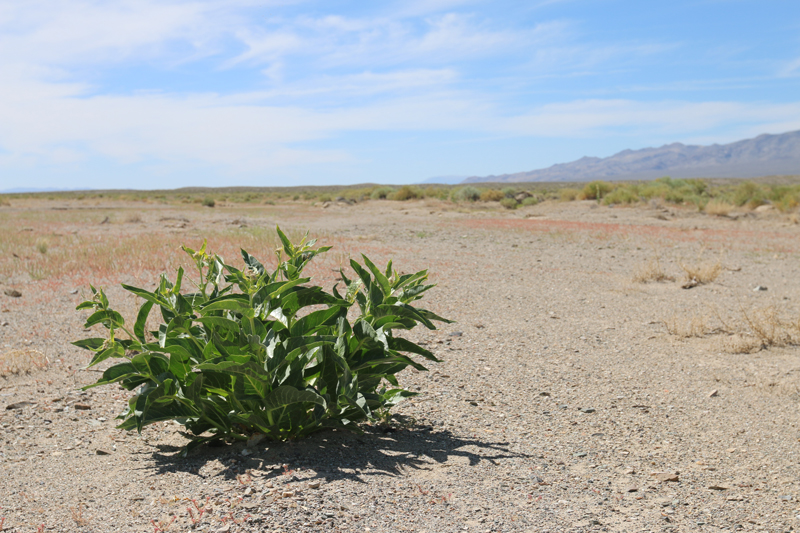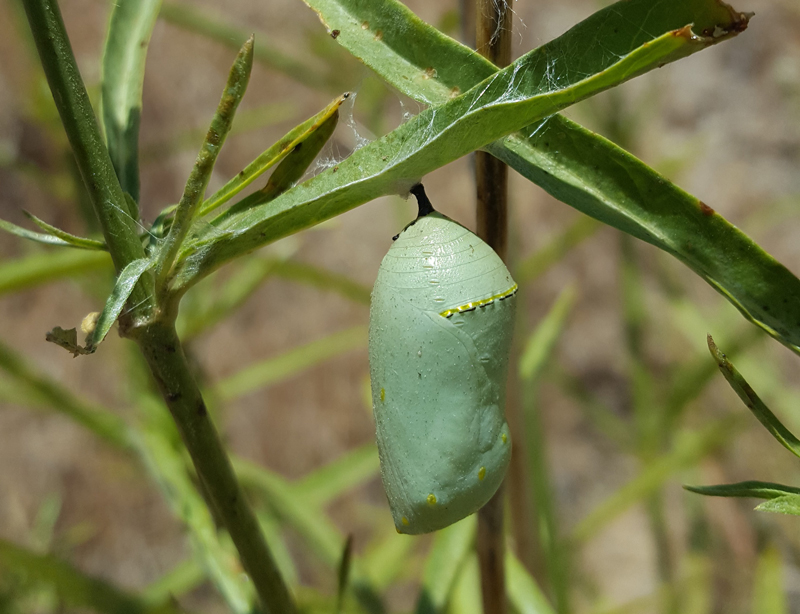Monarch researchers are trying to understand why monarch overwintering populations are declining in the West, and we need your help! Overwintering monarch populations have declined by 74% in coastal California and more than 80% in central Mexico since monitoring began about 20 years ago. Researchers in the eastern U.S. have identified loss of milkweed (the monarch’s required host plant) as the most significant factor contributing to declines at the Mexican overwintering sites. In the western states, we suspect that loss and degradation of breeding habitat may also be playing a role in the monarch’s decline. However, before we can really determine this, we first need to know more about where milkweed occurs in the landscape and whether monarchs are using it.
To this end, scientists from the Xerces Society and the U.S. Fish and Wildlife Service Region 1 spent the last few years compiling a large database of monarch and milkweed occurrence records from museum vouchers, online herbaria, scientific literature, butterfly researchers, botanists, land managers, and many other sources. Using all the records we collected, we created a map and identified some key areas that we suspected were important to breeding monarchs, but for which we lacked data. These holes in our coverage, which included large areas of the Great Basin, often had small human populations and a lot of open land. We needed more eyes on the ground to work out what was happening in these regions.

Over the past two years, a group of state and federal agencies, universities, and nonprofits (including Xerces) started filling in these data gaps. Collectively, these partners had folks on the ground in every state west of the Rocky Mountains, searching for new milkweed populations, monitoring for monarchs, and collecting important data on habitat associations, management impacts, and potential threats to breeding areas.
At the same time, Xerces started working with a team of web developers at Birds in the Hand to develop an online data repository for the existing database and all new incoming data. A new website was created in tandem to provide data collectors with a portal for feeding data into the database, learning more about monarch conservation in the West, and recruiting more citizen scientists and others interested in reporting observations.
The result is the new Western Monarch Milkweed Mapper, which will help us better track milkweed and monarch occurrences across the West. This website and its associated database is a collaborative effort between the Xerces Society, Idaho Department of Fish and Game, and Washington Department of Fish and Wildlife, with funding from a U.S. Fish and Wildlife Service State Wildlife Grant and the National Fish and Wildlife Foundation. It is built upon the efforts of many engaged individuals and agencies.

The Western Monarch Milkweed Mapper will directly address remaining data gaps by encouraging users to report occurrences of monarchs and milkweeds in 11 western states. In addition, users can use an interactive milkweed ID tool to identify 46 milkweeds to species, learn more about monarch conservation efforts in the West, and participate in other citizen science projects. A special feature of the website is the ability to explore and download over 40,000 western monarch and milkweed records, ranging from 1900 to the present day. All data submitted through the website will feed directly into this growing database.
Some of the key research questions that these data will help us answer include:
- Where do different milkweed species grow in the West?
- Where do monarchs occur in the West?
- Where and when are monarchs breeding?
- When does milkweed emerge and senesce in the West?
- What differences are there in the phenology of different milkweed species?
- Are different milkweed species associated with particular types of habitat?
Answering these questions will help conservationists, restoration practitioners, land managers, and policy makers develop the best ways to help western monarchs moving forward, and your participation will help us achieve this. As you explore parks, natural areas, and even roadsides or your backyard this year and into the future, we hope that you will keep an eye out for milkweed and monarchs and report your observations via this site. All you need is a smart phone or a digital camera and access to a computer. Monarch conservation has a long history of dedicated citizen science support, and much of what we know about western monarchs today is a direct result of passionate citizens collecting and reporting data. Help us spread the word and continue to fill in the data gaps that may be so crucial to saving this amazing species!



